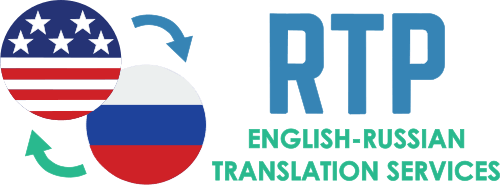One of the most frequent requests I receive from new clients is as follows: “I need to translate this document/presentation/file/website etc. How much does it cost?“
The key word here is to “translate“. I mean, the majority of clients who never ordered translation before think that they pay for “translation” only. However, almost every translation project includes associated services.
Since every additional step takes time, it may also result in additional charges. Such associated services can include, among other things, the following:
NEED ENGLISH-RUSSIAN TRANSLATION?
MAKE YOUR ORDER TODAY AND
GET 10% OFF
Formatting
The abundance of formats used by various businesses can be a real bummer for any specialist who had to process such documents in the course of work. As a rule, working with mainstream files like .docx or .xlsx does not cause any problems (of course, when they are prepared the right way).
However, companies, who use translation services, apply very specific software and generate files inherent to their main activities:

Designers use specific programs like Photoshop, Adobe Illustrator and similar. Translators have to take this into account and process such files accordingly. Today, some CAT tools already support special formats generated by design software, but we still have to check files after translation to avoid formatting issues like text overlapping or differences between Cyrillic and Latin fonts (in case of English-Russian translation), etc.
Engineering companies use CAD software to produce drawings (e.g. .dwg files), which can be processed either in extremely expensive CAD tools like AutoCAD Civil 3D or by means of a very limited set of converters, which extract translatable content from drawings and upload the translated text back to drawings. In any case, such work requires specific skills and takes more time than ordinary MSWord document translation.
Another problem comes when businesses use PDFs or scanned files. Though PDF is a perfect format if you want to protect your document from changes or compress rich content (text + images), it becomes a nightmare for translators who have to convert PDF files back into an editable format before translation.
Scans of printed documents require optical character recognition (OCR) with further thorough formatting and corrections (various errors or omissions may occur during OCR of poorly scanned files).
If a file is not so long, for instance, 10 pages, it does not take much time to prepare it for translation. However, last time when I received 300-page scanned loan facility agreement for translation with a requirement to create a bilingual file I had to allocate additional budget for OCR and formatting which took almost 3 business days.
Glossary Compilation
In case of large projects, maintaining terminological consistency in the course of translation is of utmost importance.
Imagine 5 translators working on an urgent large project. Even if they are a strong team of professionals, each of them has a slightly different background, therefore, they will inevitably choose different wordings for coined new terms, ambiguous word combinations, and uncommon/invented abbreviations.

Glossary complication takes a lot of time, the latest translation project included over 200 terms used multiple times across the document and it took almost 4 days to prepare a comprehensive glossary.
Therefore, you should keep in mind that such additional service may cause extra charges if you have a huge translation project.
Proofreading and Editing
QC is an important step in every business (be it services or manufacturing of goods), moreover proofreading and editing is required by ISO 17100 Translation Quality Standard.
Leading tech companies such as Samsung or Apple allocate significant resources to ensure quality control and integrate complex QC & QA philosophy into their workflow.

Translation is no exception. We all are humans and we make mistakes. Even the most proficient translator may occasionally omit typos or choose a wrong tone of voice for your marketing campaign in another language.
That’s why only a professional editing followed by proofreading can help to eliminate all sad mistakes and create an amazing translation.
Of course, such supplementary services shall be paid. Industry practice shows that editing costs half of the translation (but the price may vary depending on the quality of translated content).
Testing of the localized product
In case of website/app localization testing is an inevitable step to eliminate any possible issues (overlapping, overrunning of text, errors, etc.). When you prepare a request for “translation” of your website, keep in mind that your translation project may require associated services.

Localization is a whole new topic for discussion. There are many underlying potential problems that can show up in the process of translation, starting from the depth of localization (frontend part only or the entire website with admin dashboard; textual content only or all types of content like videos, presentations, infographics, etc.).
As a rule, localization budgets are estimated on an hourly basis to ensure proper coverage of all project aspects and decent pay for translation + all associated services.
Here at Russian Translator Pro, we always provide detailed information about any auxiliary services that may be required to meet the highest quality expectation of our clients. This you can have a clear and unambiguous understanding of your translation expenses.
Have questions? Feel free to post your comments below and do not forget to share this post with your network.

